The Federation of East African Freight Forwarders Associations shows that logistical performance in both domestic and international trade is central to economic growth and competitiveness.
INTRODUCTION
The logistics sector is recognised as one of the core pillars of economic development, connecting firms to domestic and international markets through reliable supply chain networks.
The process of integrating East African Community (EAC) nations into one bloc has helped to improve the region’s logistics performance, making investments more attractive and reducing the cost of doing business.
For freight forwarders in East Africa, who oversee the movement of cargo, packing, documentation and customs clearance, the establishment of a Single Customs Territory (SCT) in the EAC has helped to tackle a lot of problems, particularly related to clearance procedures.
The SCT was implemented to facilitate faster clearance and improve cargo movement along the Northern and Central Corridors of East Africa.
There has been a significant reduction in the administrative burden of freight forwarding in East Africa as a result, with improvements made in areas such as customs transit systems, cargo tracking systems and interagency coordination in the region.
The international trade logistics industry in East Africa is characterised by vertical segmentation, in which the largest logistics suppliers take the biggest clients, offering a variety of services including warehousing, consolidation, packaging, goods inspection, and import/export advisory services.
Large freight forwarders are increasing their scale, not only to leverage their buying power with carriers and their geographic scope, but also to develop their range of services, especially those that add value and increase margin.
However, small- and medium-sized freight forwarders are being forced to adapt. As well as increasing efficiency in an environment where manual data entry remains widespread, they are having to evolve from pure forwarders to providers of a wider range of services.
As a result, freight forwarding is a highly competitive business in most parts of the world, including East Africa, necessitating the development of more value-added services for operators in the industry.
It comes as the clearing and forwarding industry in East Africa continues to face a lot of challenges in terms of professionalism, with the sector over time defined as one where a lack of integrity is rife.
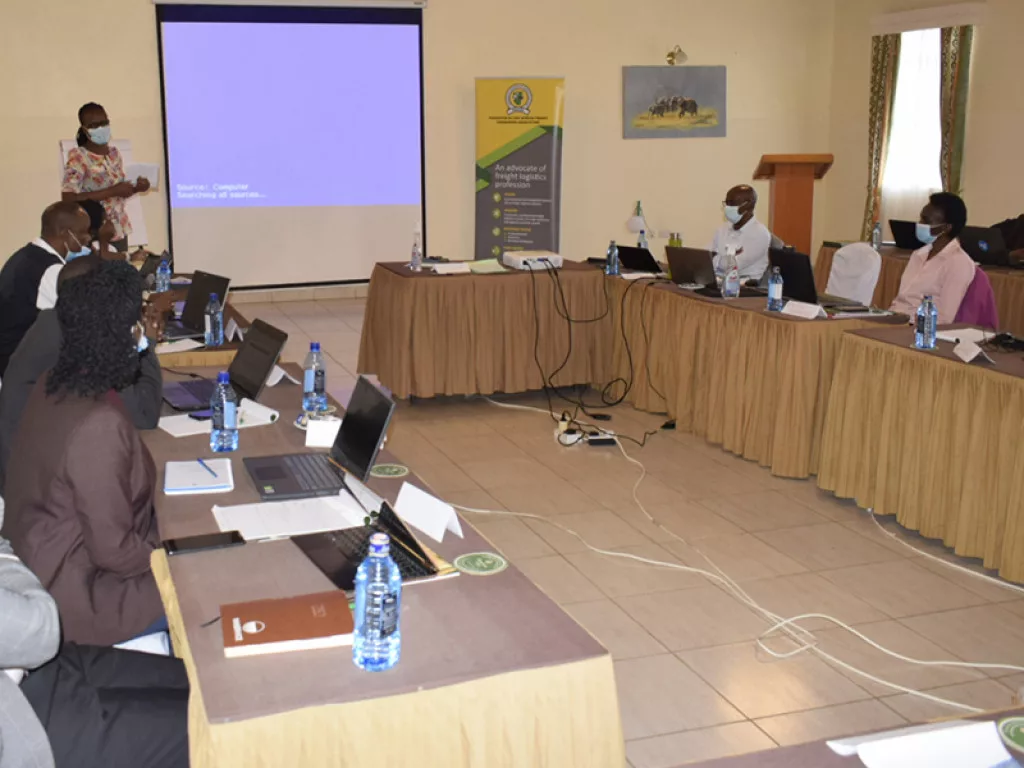
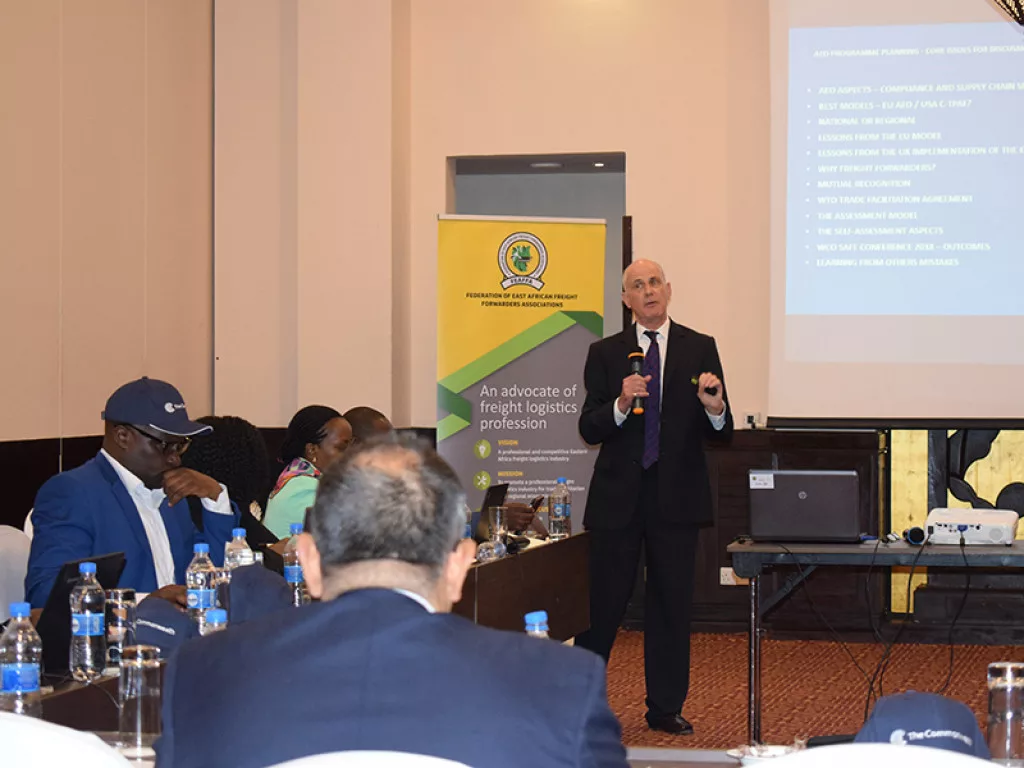
INTERVIEW: FEDERATION OF EAST AFRICAN FREIGHT FORWARDERS ASSOCIATION (FEAFFA)
Aiming to promote a professional freight logistics industry in East Africa, Fred Seka, President of the Federation of East African Freight Forwarders Associations, discusses freight forwarding as a catalyst for trade and regional economic growth
Can you talk us through the origins of FEAFFA, how it came about, and its initial vision?
Fred Seka, President (FS): The idea of forming The Federation of East African Freight Forwarders Associations started way back in 1999, just as the East African Community (EAC) was being revived after it collapsed in 1977.
Freight logistics industry players decided to form a regional association that would provide them with an opportunity to engage with the EAC and its partner states at a regional level with one voice, serving the interests of members and the industry at large.
It united all players in the EAC on matters related to customs clearing and freight forwarding, in order for logistics to become a reputable profession in the region.
FEAFFA today is a regional private sector apex body of the clearing and forwarding agents (CFAs) industry in East Africa, representing over 2,500 CFA firms.
Currently, FEAFFA has six members: the Association Burundaise des Agences en Douane et Transitaires (ABADT), Kenya International Freight and Warehousing Association (KIFWA), Rwanda Freight Forwarders Association (RWAFFA), Tanzania Freight Forwarders Association (TAFFA), Uganda Freight Forwarders Association (UFFA), and Zanzibar Freight Forwarders Bureau (ZFB).
FEAFFA aims to promote a professional freight logistics industry to facilitate trade and regional economic growth. It strives to address challenges experienced by the freight logistics industry, and advocates for the removal of barriers that impede the full implementation of the EAC Customs Union.
Since inception, how has FEAFFA developed and progressed in terms of its key objectives and the messages it tries to get across?
FS: The work of The Federation of East African Freight Forwarders Associations revolves around professionalising the logistics industry and enhancing compliance in the EAC region.
There was a need for the industry to speak in one voice, especially on matters of common interest. This is why the industry came together at a regional level, bringing together different national associations.
However, by coming together, we realised there were challenges that we needed to address to improve the way we serve our clients.
Some of the key areas we prioritised included training and capacity building, enhancing ethical conduct, supporting members to enter meaningful contracts with their customers by developing standard trading conditions, creating information-sharing opportunities, supporting trade facilitation efforts by customs administrations, and more.
To address knowledge and capacity gaps, FEAFFA partnered with revenue authorities in the region and the EAC Directorate of Customs to launch a premier regional training programme for customs agents and freight forwarders. The East African Customs and Freight Forwarders Practicing Certificate (EACFFPC) programme seeks to equip clearing agents and freight forwarders with the necessary knowledge, skills, and other important attitudes for the provision of competitive and quality services to their customers.
We are forever indebted to our development partners, who have been extremely supportive of our EACFFPC training programme and partnered with us to scale it up in the region.
As well as developing a code of conduct, stating the dos and don’ts that must be agreed upon by the agent and their clients before conducting business. FEAFFA also developed the Model Customs Agents and Freight Forwarders Management Bill 2017, a regional model bill to function as a reference point to guide EAC partner states in enacting national laws to govern operations of the freight forwarding industry.
The bill covers aspects considered by a spectrum of industry stakeholders as vital in ensuring a genuinely professional customs agents and freight forwarders sector.
The standard trading conditions (STCs) developed by FEAFFA, meanwhile, describe the basic terms and conditions under which business transactions are made, protecting agents from unscrupulous customers.
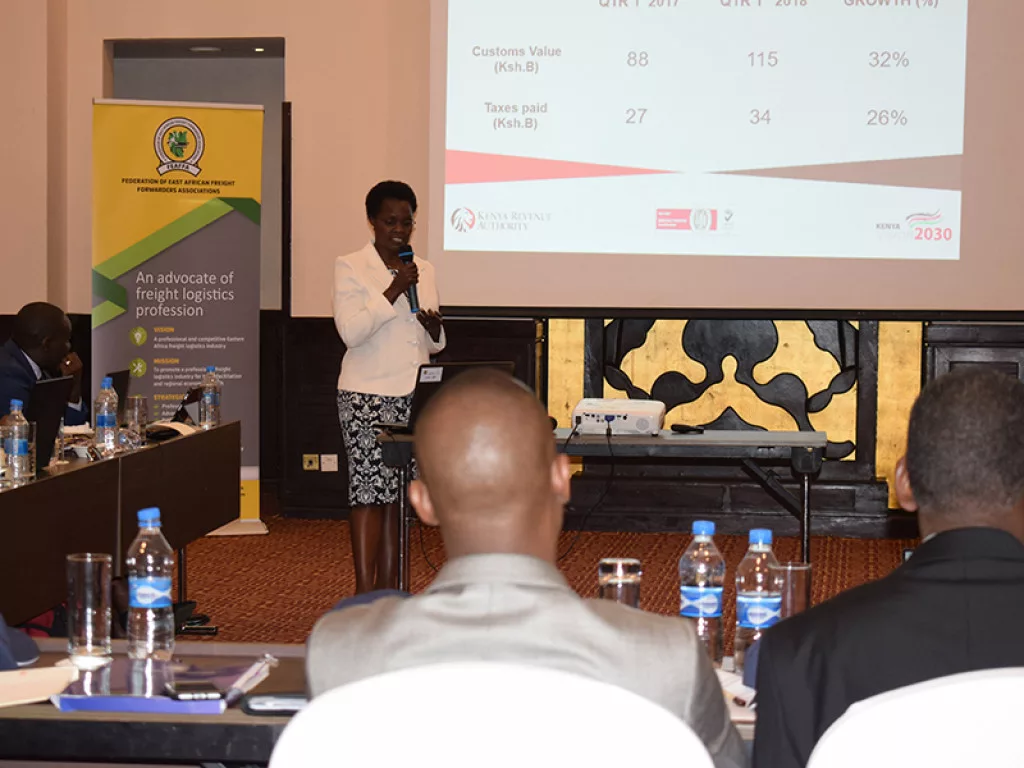
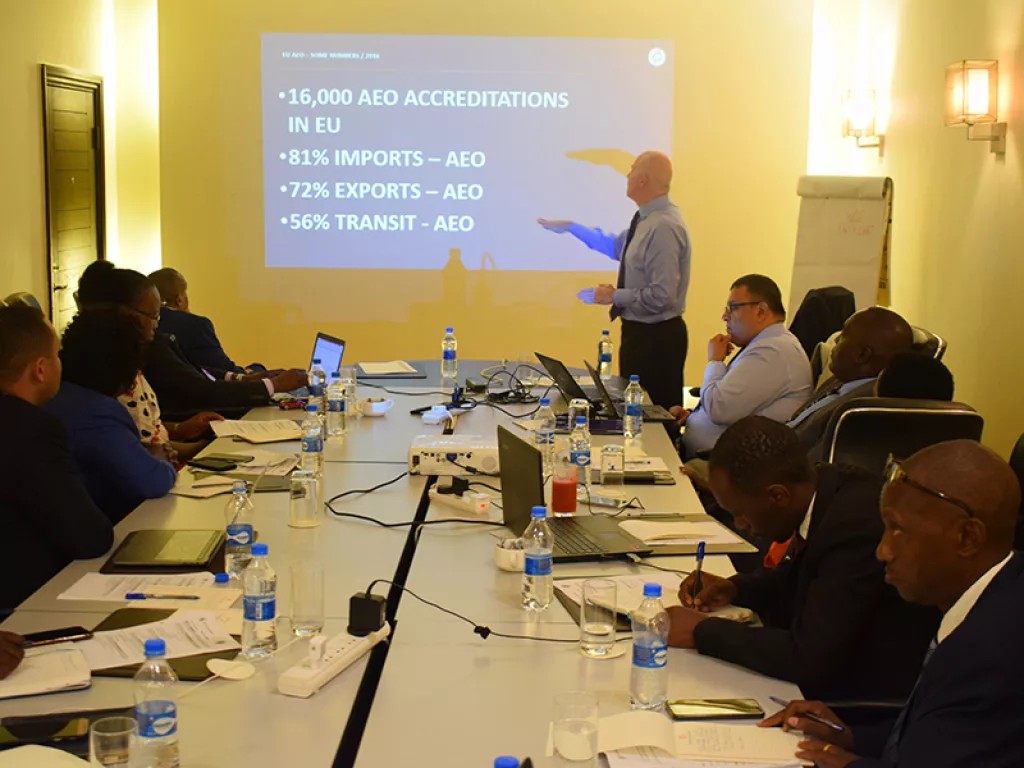
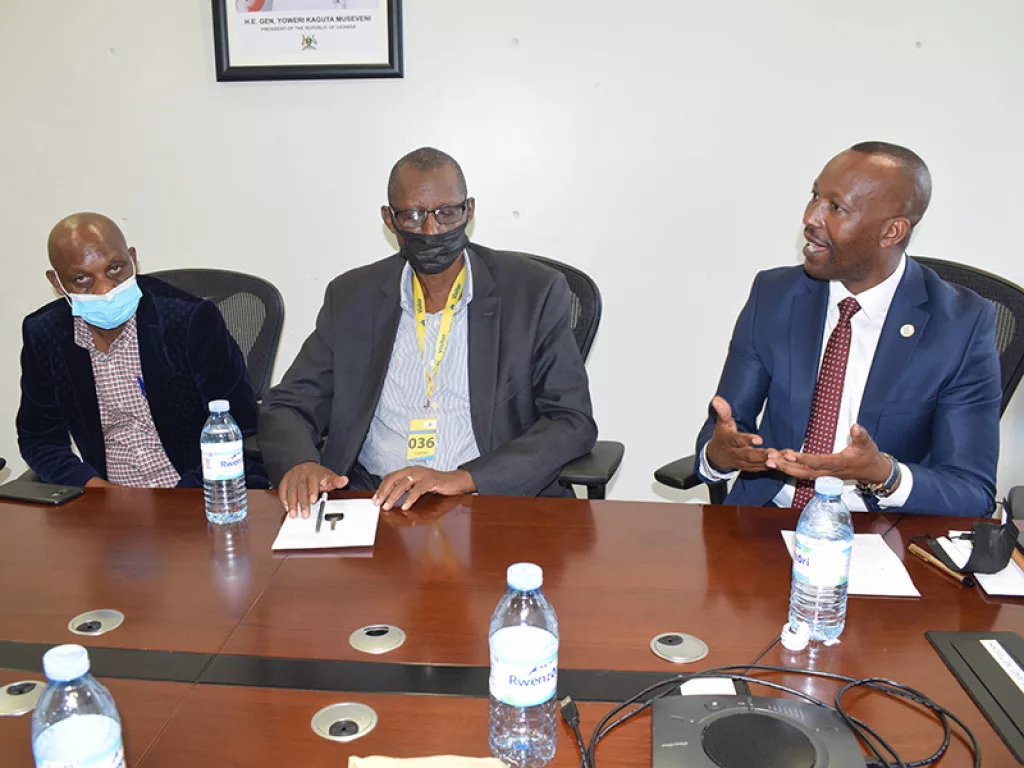
FEAFFA appreciates the contribution trade facilitation plays in reducing the cost of moving cargo across the region. As such, it has made it a point to support all efforts intended to simplify and harmonise business processes.
One such effort is the Authorised Economic Operator (AEO) programme, which increases the proportion of regional cargo moving with minimal restrictions and controls, whilst the Global Logistics Convention (GLC) programme aims to bring together key players within the freight logistics industry at national, regional, and international levels to share experiences and common practice.
Another key role the FEAFFA has played is to become a channel of information for the industry whenever there are changes in the operating environment, such as the Rules of Origin (RoO) or the Single Customs Territory (SCT). This is usually done to ensure clearing agents can seamlessly play their role of facilitating the movement of cargo within the region.
FEAFFA also partnered with TMEA and the EAC to develop and market the Regional Electronic Cargo and Driver Tracking System (RECDTS).
The RECDTS App provides a surveillance system to monitor the health of truck drivers and enable contact tracing. It allows partner states to electronically share truck drivers’ COVID-19 test results, thereby minimising the need for multiple COVID-19 tests in a single trip.
The cornerstone of FEAFFA’s initiatives, though, has been its development partners, among them the United States Agency for International Development (USAID), TradeMark East Africa (TMEA), Japan International Cooperation Agency (JICA), Business Advocacy Fund (BAF), Commonwealth Secretariat (COMSEC), Family Health International 360 (FHI360) and the Africa Economic Research Consortium (AERC).
We have worked with them on various programmes geared towards building the capacity of the industry to facilitate trade across the borders of the EAC region.

“In the next five years, FEAFFA envisages an industry that is fully professional and compliant with the enactment of self-regulation laws”
Fred Seka, President, FEAFFA
What do you find most exciting about working within the East African logistics sector?
FS: The transport and logistics sector is very complex, dynamic, and highly interlinked with other sectors both at local and regional levels.
The sector in the region has made many strides, but unfortunately a myriad of challenges still prevail. Many non-tariff barriers (NTBs) to trade still exist, and new ones continue to crop up from time to time, but logisticians must navigate through all these barriers to ensure cargo gets to the desired destination in time.
I wake up every day to ensure these challenges do not stand in my way, and that our customers get their goods on time and in the right condition. That is what keeps me excited. The outbreak of COVID-19 taught us big lessons, because cargo still had to move from one point to another.
On the flip side, what are its biggest challenges?
FS: Aside from NTBs, there is a low level of trust from regulators and shippers. As a result, they continue to impose many restrictions to the detriment of compliant and professional operators.
There is also stiff competition from multinationals that is stifling small- and medium-sized enterprises (SMEs). Big players can attract business from their associates in a country or region, and they also offer a variety of services that most small operators are unable to compete with.
Other challenges include political rivalries and insecurity, conflicts with regulators and other government entities, some aspects of trade in the region not being fully harmonised, the African Continental Free Trade Area (AfCFTA) and the likely challenges it will cause for SMEs in our sector, infrastructure limitations in some parts of the region, and general public ignorance about the significance of the industry.
The industry is also not professional enough to be able to deal with the unethical conduct of operators. It is still reliant on customs and general commercial laws, which unfortunately do not adequately address this critical gap in our sector.
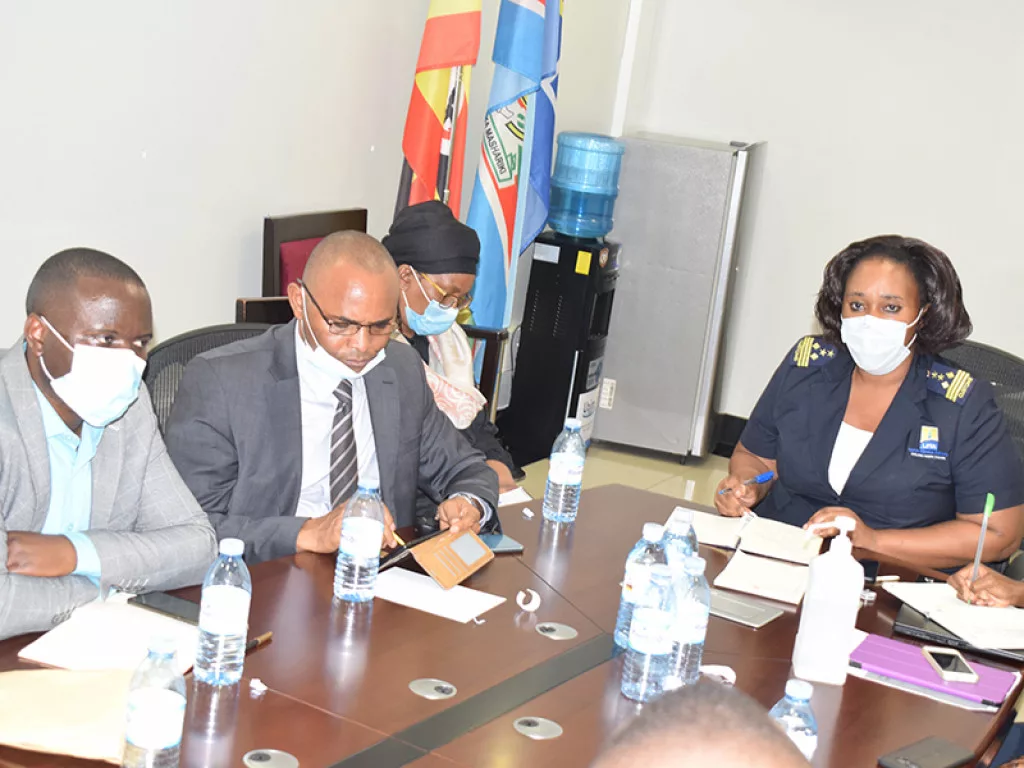
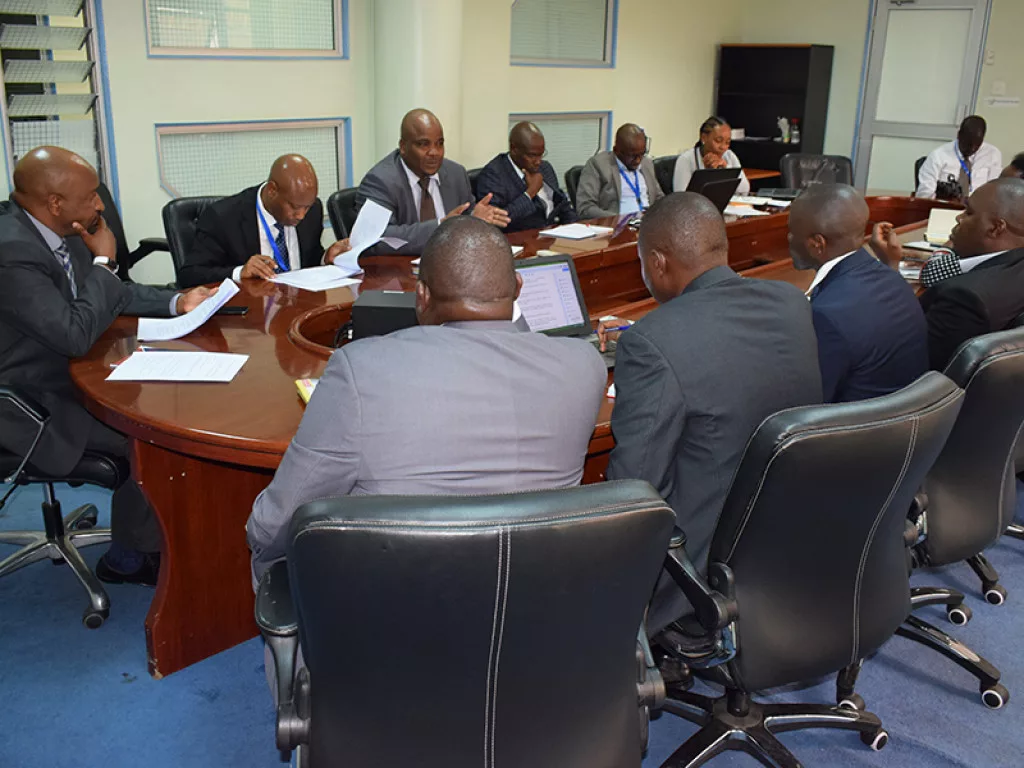
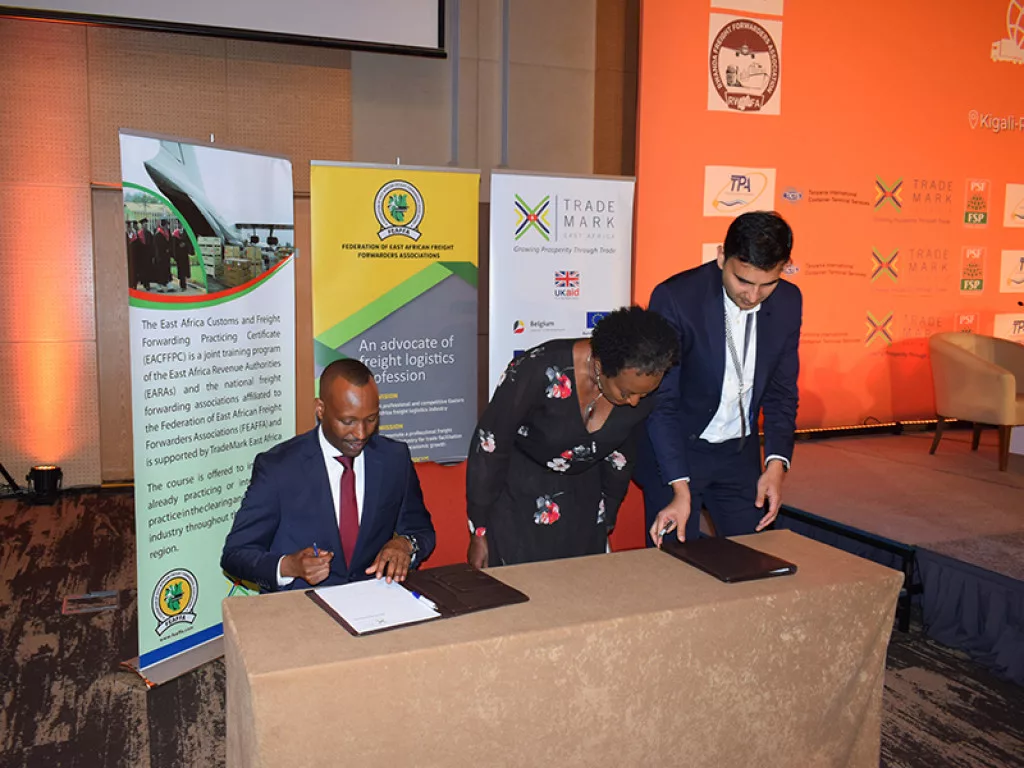
What trends are currently transforming the East African logistics space and how are you responding to them?
FS: The outbreak of COVID-19 in the region and globally has significantly changed the way we conduct business within the freight logistics industry. The requirement for paperless transactions, for instance, means that we must provide capacity for our members to cope with these changes.
FEAFFA is also seeking support and collaboration to implement the recommendations from a study into the impact of COVID-19 on the transport and logistics sector in East Africa, conducted in partnership with the Africa Economic Research Consortium (AERC).
The low uptake of the AEO programme in the region is also exerting pressure on FEAFFA and other stakeholders to find ways of improving its uptake and facilitating trade. The recommendations of a study released by FEAFFA in partnership with the Commonwealth Secretariat (COMSEC) will help to do that.
The push for more accountability among customs clearing and forwarding agents charged with the duty of handling cargo on behalf of their clients in the region prompted FEAFFA to lobby for the enactment of a self-regulation bill among partner states in East Africa.
The self-regulation bill is meant to address the gaps in the laws that govern the industry. Existing laws, for example, do not adequately address the key aspects of individual agents such as their ethical conduct, training, and their relationship with cargo owners. Through this bill, FEAFFA will also have the mandate to implement her initiatives in the region and with legal backing.
In terms of diversifying modes of transport, we have witnessed increased investment in rail and maritime transport, whilst the establishment of One-Stop Border Posts (OSBPs) will enhance intra-regional trade in East Africa.
The implementation of the Single Customs Territory (SCT) will facilitate faster clearance and improve cargo movement along the Northern and Central Corridors, and there has even been trade facilitation with other countries outside the EAC. TMEA, for instance, has been implementing programmes in Ethiopia.
With the digitalisation of customs procedures, customs departments have continued to embrace digital solutions to address various operational challenges.
The demand for one-stop solutions has also largely increased in the region. FEAFFA is therefore seeking ways to enhance this as a way of facilitating trade.
“FEAFFA aims to promote a professional freight logistics industry to facilitate trade and regional economic growth”
Fred Seka, President, FEAFFA
What are the benefits of being a member of FEAFFA?
FS: FEAFFA provides access to participation in industry training initiatives, with subsidies available when attending some of the programmes and events run by the federation. FEAFFA advocates the common interests of members at a national and regional level, generating recognition in East Africa and beyond.
Have you got any projects in the pipeline you wish to highlight?
FS: The domestication of the Model Customs Agents and Freight Forwarders Management Bill 2017 is still underway. All EAC countries, apart from South Sudan, have drafted the bills with key stakeholders including the revenue authorities already engaged. The next key steps will involve engaging with the legislature and other relevant bodies to discuss the possible passage of the bills.
FEAFFA, with the support of TMEA, is also updating the training curriculum for customs clearing agents and freight forwarders in the region.
This follows a market survey that was earlier conducted by TMEA that outlined the need to update the curriculum to address the challenges and dynamics within the sector.
Among the key areas of focus is expanding the programme to include a diploma scheme, making the curriculum competency-based, ensuring the curriculum responds to technological requirements in the sector, and expanding existing online learning portals to ensure education is easily accessible.
Additionally, some graduates of the EACFFPC training programme often require refresher courses to keep them up to date with the changing times. We are therefore introducing a Continuing Professional Development (CPD) programme to address these gaps.
We are finalising the development of an integrated CPD system, which we intend to pilot in at least two countries before rollout, as well as advocating for an EAC COVID-19 passport to ease cross border movement for transport and logistics sector workers.
The federation is also working closely with governments and other industry stakeholders to address current challenges at the borders, review existing interventions and identify areas of improvement.
Bringing South Sudan on board is still a work in progress. We aim to unite the industry among all the EAC partner states through representation.
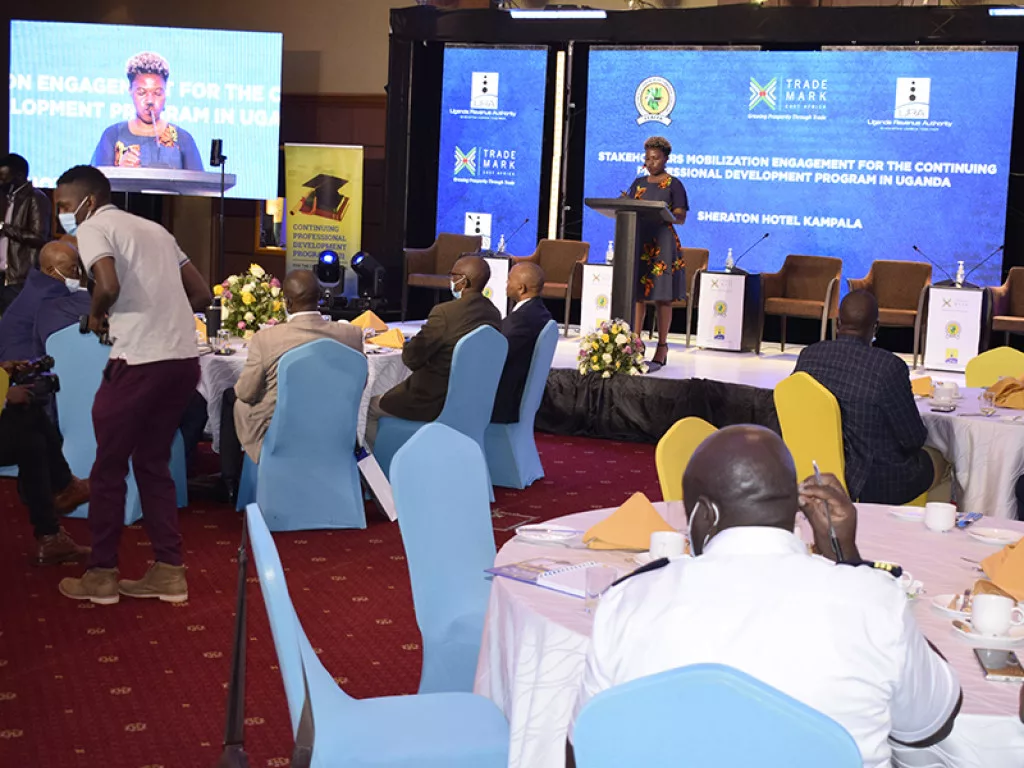
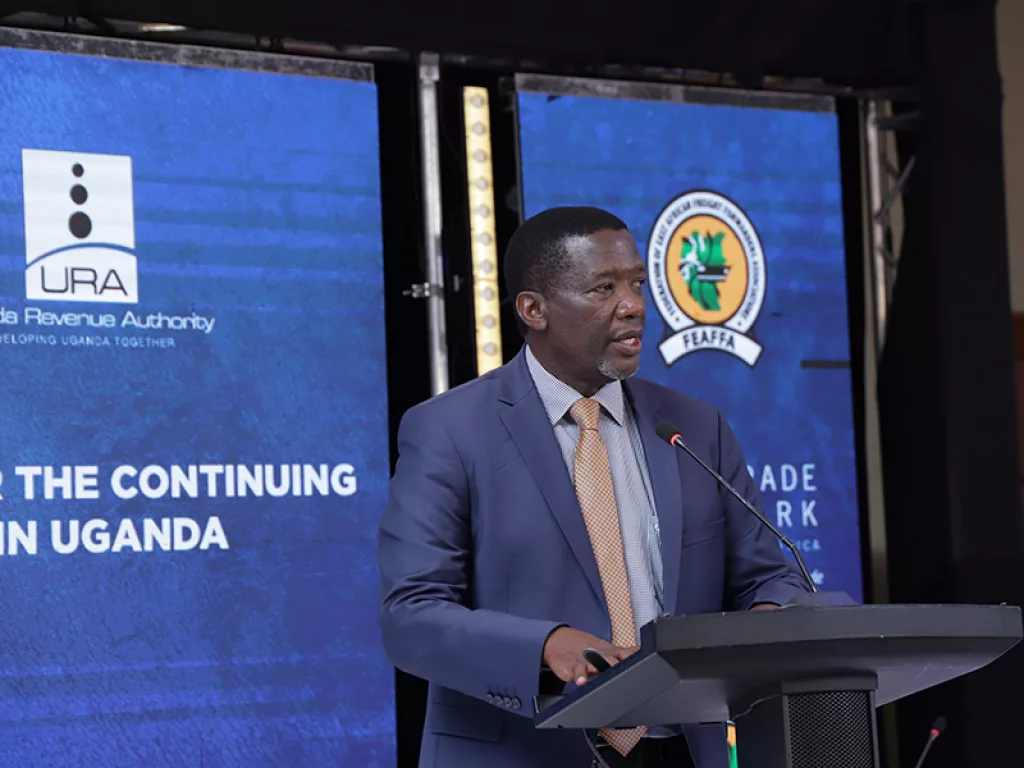
How do you see the FEAFFA developing over the next five years?
FS: In the next five years, FEAFFA envisages an industry that is fully professional and compliant with the enactment of self-regulation laws.
“In the next five years, FEAFFA envisages an industry that is fully professional and compliant with the enactment of self-regulation laws.”
We believe that the enactment of these laws will enhance the level of accountability and standardise operations across the region, which will result in a more efficient service delivery, less illegal trade, an increase in trade volume, and a significant reduction in the cost of doing business in the region.
Efficient and effective logistics services will see a significant reduction of the time and money involved in moving cargo across borders, due to this enhanced professionalism and compliance. This will positively impact the cost of doing business in the region.
FEAFFA also envisages increased trust between industry players, regulators and shippers, reducing the number of compliance measures, as well as a significant reduction in the number of NTBs to trade in the region, especially the ones that originate from an unprofessional and non-compliant industry.
We expect to add additional members, including South Sudan, in a bid to ensure all EAC partner states benefit from the initiatives of the federation.
FEAFFA’s influence on the African continent as AfCFTA takes shape will be supplemented by more recognition from both public and private sectors, as part of a self-sustaining industry.
































